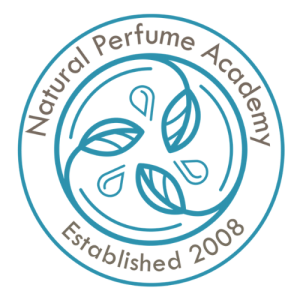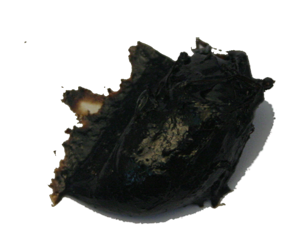Natural Perfume Academy Main Glossary

Welcome to the Natural Perfumery Glossary
The Natural Perfumery Glossary is a comprehensive public resource designed for all natural perfumers, whether you're a seasoned professional or just beginning your journey. This glossary serves as an educational tool, offering detailed definitions and insights into a wide range of natural perfume materials and terms.
Our entries cover various aspects crucial to the art and science of natural perfumery, including:
- Description and Characteristics: Detailed profiles of natural ingredients, including their origins, extraction methods, and unique olfactory qualities.
- Blending Suggestions: Insights into what other materials a particular ingredient pairs well with, helping you create harmonious and well-rounded compositions.
- Usage and Applications: Practical advice on how to incorporate each ingredient into your perfume creations.
- Safety and Regulatory Issues: Important information on the safe use of materials, including any relevant regulatory considerations.
At the Natural Perfume Academy, we are committed to fostering a deep understanding of natural perfumery through education and certification. Our glossary is a testament to this commitment, providing a valuable reference to support your ongoing learning and mastery of natural perfume making. Explore the glossary to enhance your knowledge and craft exquisite, all-natural fragrances with confidence.
Special | A | B | C | D | E | F | G | H | I | J | K | L | M | N | O | P | Q | R | S | T | U | V | W | X | Y | Z | ALL
L |
|---|
Lavender
LavenderLavandula angustifolia, Lavandula hybrida, Lavandula luisieri, etc. Description: Types of Lavender in Perfumery:
Lavender Absolute:According to Arctander:
The absolute is sweeter but less floral than the essential oil and blends well with it to recreate the authentic scent of blooming lavender. Perfumery Notes:
Blends Well With:As noted by Arctander, lavender blends beautifully with:
🧬 Extraction Types:
Regions:
Unique Characteristics: | ||
Leather A blend that is reminiscent of leather often including tobacco and smoky scents such as cade. Most noted leather scents include Peau d'Espagne and Cuir de Russie (see http://perfumeshrine.blogspot.com/2007/12/leather-series-5-cuir-de-russie-vs-peau.html for more info.) | ||
Lemon cold-pressedCitrus limonum Description: Note Family: Citrus Blends Well With:Other Citrus: Orange, Bergamot, Lime, Grapefruit Herbal: Rosemary, Basil, Thyme, Lemongrass Floral: Lavender, Neroli, Rose Woods & Resins: Frankincense, Myrrh, Cedarwood Spices: Ginger, Black Pepper, Coriander Lemon lifts a blend with its crisp brightness, often used in colognes, herbal compositions, and detox-style aromatherapy accords. Extraction Method: Cold pressing of fresh lemon peel Regions: Commonly produced in Italy, Spain, California, and Argentina Safety Note: Unique Characteristics: Highly volatile: offers strong top-note presence but fades quickly Often used in natural cleaning products, eaux de cologne, and bright, youthful perfumes Known to oxidise quickly—store in a cool, dark place with minimal air exposure | ||
Lime cold-pressedCitrus aurantifolia Also known as: Mexican Lime, Key Lime
Cold-pressed lime oil is extracted from the peel of the Citrus aurantifolia fruit, resulting in a bright, zesty, and effervescent aroma. It’s intensely fresh, green, and citrusy, with a sharp top note that lifts and energizes perfume compositions. This oil is notably phototoxic when cold-pressed, so must be used with caution in topical applications.Note Family: Citrus Description: Blends Well With:Other Citrus: Bergamot, Lemon, Orange, Grapefruit Herbal: Basil, Coriander, Lemongrass Floral: Neroli, Ylang-Ylang, Lavender Woody: Cedarwood, Sandalwood Spices: Ginger, Cardamom Cold-pressed lime enhances bright top notes, bringing a crisp and sparkling dimension to compositions. Extraction Method: Cold pressing of fresh lime peel (zest) Regions: Primarily grown and processed in Mexico, India, and the West Indies Safety Note: Unique Characteristics: Cold-pressed lime oil is more intense and green than distilled lime oil Prized for use in eau de cologne, summer accords, and natural cleaning blends Offers a short but vibrant burst in perfumery due to its volatility | ||
Locking A phenomenon where two or more ingredients interact to create an overwhelmingly strong scent that overtakes a blend. | ||


 Labdanum comes from the natural exudation of the plant Cistus landaniferus which is a small shrub growing wild in countries of the Mediterranean and the middle east. It grows well near the sea. The Labdanum gum or resinous material is further extracted by solvents to form an absolute. The absolute is commonly used in as a fixative in perfumes of the amber classification. Stefan Arctander says of Labdanum Resin Absolute on P 333 of Perfume and Flavor Materials of Natural Origin: “The odor of labdanum is sweet, herbaceous-balsamic, somewhat ambra-like and slightly animalic, rich and tenacious.”
Labdanum comes from the natural exudation of the plant Cistus landaniferus which is a small shrub growing wild in countries of the Mediterranean and the middle east. It grows well near the sea. The Labdanum gum or resinous material is further extracted by solvents to form an absolute. The absolute is commonly used in as a fixative in perfumes of the amber classification. Stefan Arctander says of Labdanum Resin Absolute on P 333 of Perfume and Flavor Materials of Natural Origin: “The odor of labdanum is sweet, herbaceous-balsamic, somewhat ambra-like and slightly animalic, rich and tenacious.” 